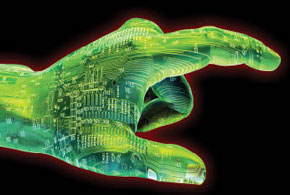Once a novelty, robots are everywhere these days. They’re being put to work in surgery, manufacturing, aerospace, engineering and construction, transportation and logistics, food services and a mind-bending array of other industries. A new report from PwC, “The New Hire: How a new generation of robots is transforming manufacturing,” points out that we’re on the verge of an industrial robotics revolution.
The survey of 120 global manufacturers found that 59 percent of companies are currently using some type of robotics technology. In fact, more than 1.5 million robots are currently at work in factories across the globe, with an estimated 180,000 in the United States. Those numbers will increase as the global industrial robot market reaches a projected $41 billion by 2020.
While much of the focus centers on automation and squeezing out greater productivity at lower costs, industrial robots also change the table stakes. As manufacturers and others look to become more agile—and enter micromarkets that often involve rapid change—robotics is playing a key role. Bob McCutcheon, PwC’s industrial products leader, points out that businesses are increasing looking to “respond quickly to customer preferences and expectations,” and robotics plays a central role in all of that.
Of course, the shift to a robot economy is introducing new challenges, as well as new opportunities. There’s a growing need for business and IT leaders to think of the technology in context with the Internet of things, machine-to-machine (M2M) communication and 3D printing. There’s a need to understand how robotics changes an organization’s operational footprint and alters outsourcing, offshoring and more. Finally, it’s critical to understand how the technology disrupts hiring, training and other aspects of human resources.
Indeed, the PwC respondents acknowledged that robotics has the potential to demoralize workers. Interestingly, 28 percent believe that the biggest impact of robotics over the next three to five years will be the replacement of workers. However, 35 percent believe the biggest impact will be the creation of new job opportunities to engineer advanced robots and robotic operating systems.
The takeaway? Business and IT leaders across a wide swath of industries must begin to grapple with the technical and IT aspects of robotics technology, along with the human implications and ramifications. By now it should be clear that robotics will transform the enterprise in the years ahead.









